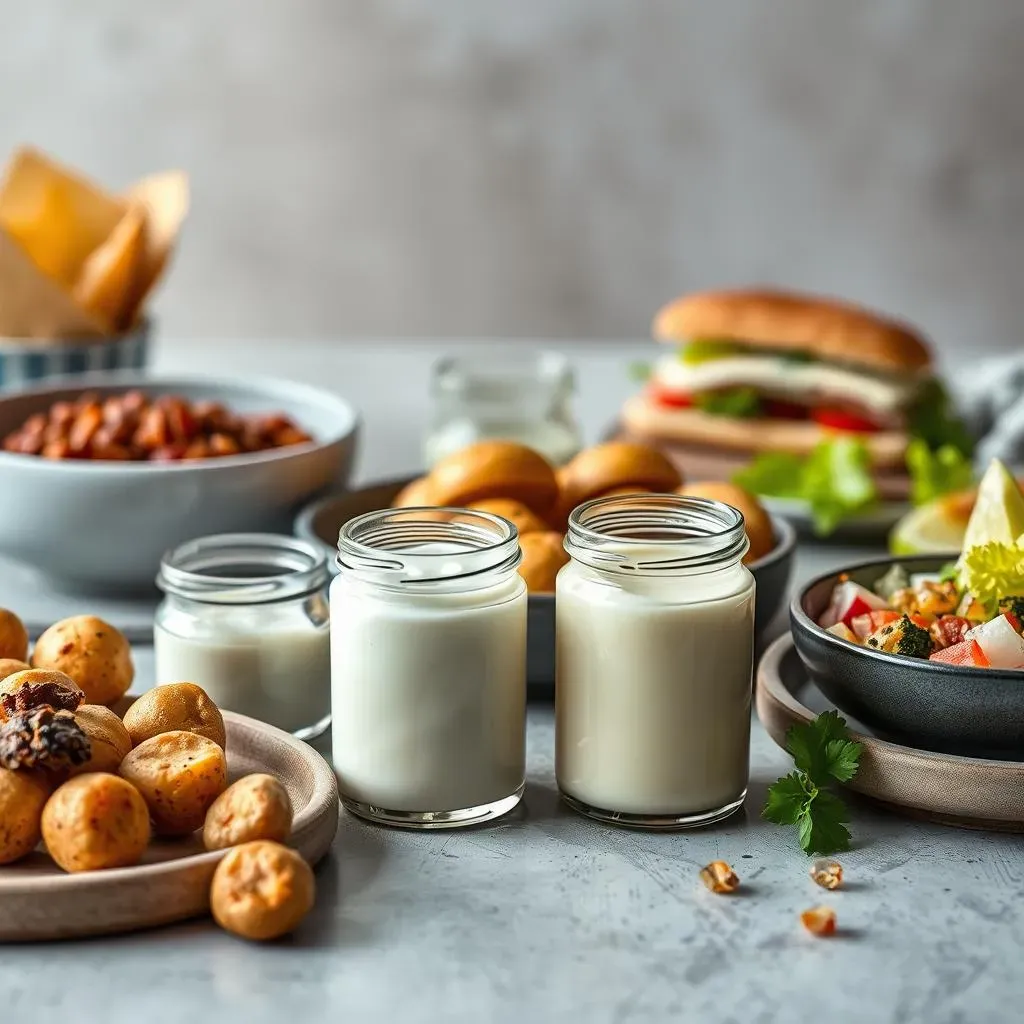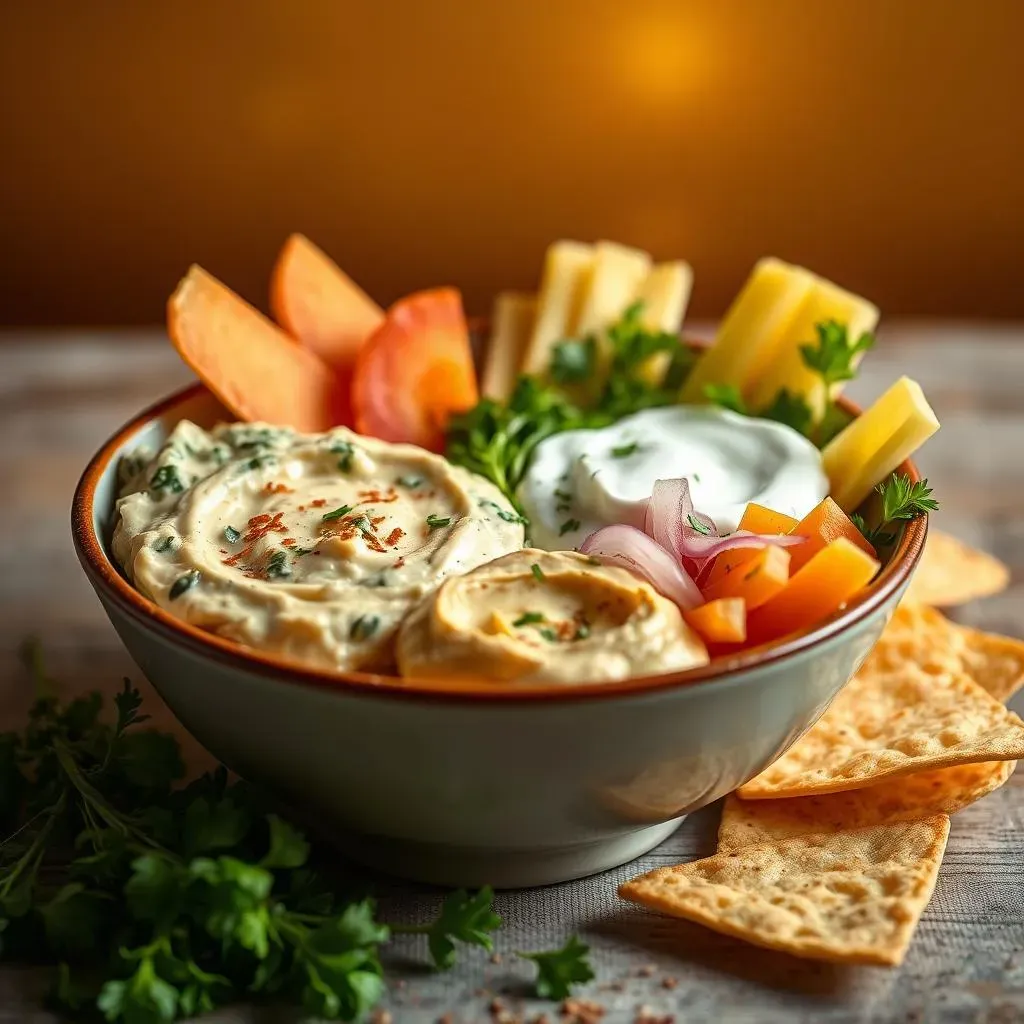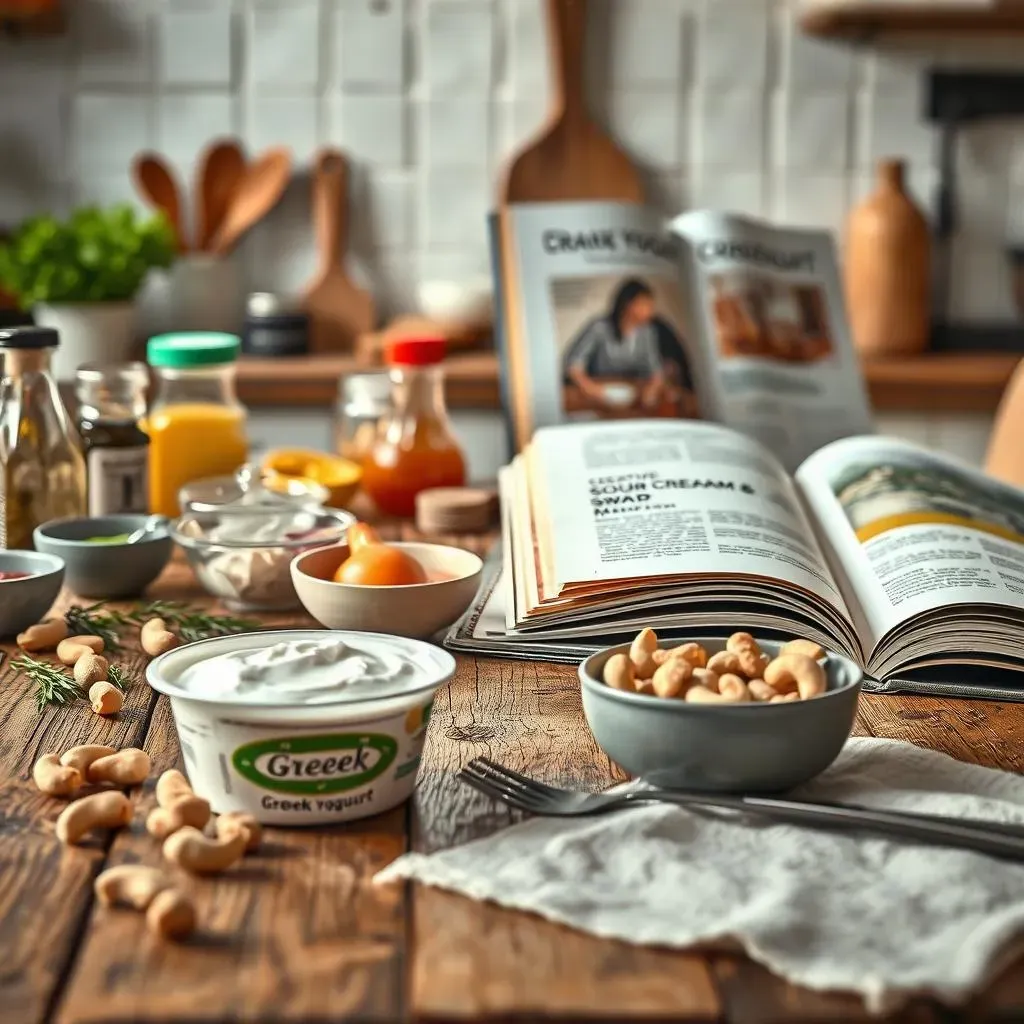Table of Contents
Ever stared blankly at a recipe, wondering if you can swap sour cream for mayo? We've all been there! This article tackles the burning question: "Can I substitute sour cream for mayo?" It's a creamy conundrum that deserves a clear answer. We'll dive into a taste test, comparing the unique flavors and textures of sour cream and mayonnaise to understand their distinct profiles. Then, we'll explore the situations where a sour cream swap actually works wonders (think dips and certain sauces) and where it might be a recipe disaster (goodbye, perfectly emulsified dressing!). Finally, we'll unleash our creativity and explore some fun alternatives to both sour cream and mayo, opening up a whole world of culinary possibilities. Get ready to unlock your inner chef and master the art of ingredient substitution!
Sour Cream vs. Mayo: A Taste Test

Sour Cream vs. Mayo: A Taste Test
Sour Cream vs. Mayo: A Taste Test
Let's get down to the nitty-gritty: sour cream and mayo are wildly different. Sour cream, that tangy dream, boasts a distinctly acidic bite thanks to its cultured dairy base. It's thicker, almost fluffy, and offers a pleasant tartness that brightens up dishes. Think creamy potato toppings or a dollop in your chili. Mayo, on the other hand, is an emulsion of oil, eggs, and vinegar. It's smoother, richer, and generally more neutral in flavor, providing a creamy base for sandwiches, dressings, and dips. It's the ultimate blank canvas, allowing other ingredients to shine. Trying to use one in place of the other is like trying to substitute a fluffy cloud for a smooth stone – they might *look* similar from afar, but up close? Totally different.
The texture difference is huge too. Sour cream's thicker consistency lends itself well to toppings and dishes where you want a noticeable dollop. Mayo, being thinner and more easily spreadable, is better for sauces and dressings that need a smooth, even texture. You wouldn't want chunky mayo in your potato salad, right? And nobody wants a runny sour cream on their burger. Think of it this way: sour cream is the bold extrovert, while mayo is the subtle, sophisticated friend. They both have their place, and understanding their unique characteristics is key to successful culinary adventures. Want to learn more about sour cream substitutions? Check out our ultimate guide on ricotta cheese for sour cream.
Characteristic | Sour Cream | Mayonnaise |
|---|---|---|
Flavor | Tangy, acidic | Neutral, slightly tangy |
Texture | Thick, slightly fluffy | Smooth, creamy |
Best Use | Toppings, dips, some sauces | Dressings, sauces, sandwiches |
Now, let's talk about those times you *might* get away with a swap. Sometimes, a pinch of lemon juice added to mayonnaise can mimic some of the tang of sour cream. But it's a delicate balance; too much lemon, and you'll end up with a lemony disaster! For example, in a simple dip, the substitution *might* work. But when it comes to baking? Probably not a good idea. The chemical reactions in baking are precise, and swapping ingredients without considering their impact can lead to some seriously disappointing results. Need a buttermilk substitute? We've got you covered! Check out our article on substituting sour cream for buttermilk.
- Consider the recipe's overall flavor profile.
- Think about the desired texture.
- Always start with a small substitution to test it out.
When Sour Cream Works (and When It Doesn't)

When Sour Cream Works (and When It Doesn't)
Dips and Spreads: A Sour Cream Success Story
Let's talk triumphs! Sour cream shines in dips and spreads where its tangy flavor and thick texture create a delightful contrast. Think creamy spinach and artichoke dip, a zesty French onion dip, or even a simple sour cream and onion dip. In these applications, the thickness of sour cream works to its advantage, creating a satisfyingly chunky texture. The tanginess cuts through the richness of other ingredients, adding a refreshing brightness. Swapping in mayo here would result in a much smoother, less interesting dip, lacking the delightful textural contrast and zesty punch.
However, even in dips, consider the other ingredients. If your recipe relies on a delicate balance of flavors, a sour cream swap might throw things off. For example, in a classic guacamole, sour cream's acidity might clash with the avocado's subtle flavor. Sometimes, a little experimentation is needed! Need more sour cream substitution ideas? Check out our guide on Greek yogurt as a sour cream substitute.
- Consider the recipe's other ingredients.
- Think about the desired flavor profile.
- Always taste-test as you go!
Baking Blunders: When Sour Cream Fails
Now, for the cautionary tales. Baking is a precise science. The ingredients interact in specific ways, and substituting sour cream for mayo (or vice versa) can lead to disastrous results. Sour cream contains moisture and acidity that can significantly alter the texture and rise of baked goods. In cakes, muffins, and other baked treats, the results could range from a dense, gummy texture to a complete collapse. The acidity might also react negatively with other ingredients, resulting in an off-flavor. Mayo's emulsion, on the other hand, might not provide the necessary moisture or structure in baking. In short, stay away from this swap in the baking world!
Instead of sour cream in baking, you might find that applesauce or mashed banana create a similar moistness, though their flavors will certainly influence the final product. For a more neutral option, you could try using plain yogurt. It's a safer choice than sour cream, offering a similar consistency and moisture without the same acidity. Want to know more about baking substitutions? Check out our comprehensive guide on substituting sour cream for buttermilk in baking.
Ingredient | Suitable for Baking? | Potential Impact |
|---|---|---|
Sour Cream | Generally No | Alters texture and rise |
Mayonnaise | Generally No | May not provide sufficient moisture |
Sauces and Dressings: A Case-by-Case Basis
The world of sauces and dressings is a bit more nuanced. Sometimes, sour cream can work as a substitute for mayo, but it depends heavily on the specific recipe. In a creamy pasta sauce, for example, sour cream can add a nice tangy twist, provided the other ingredients complement its acidity. However, in a delicate vinaigrette or aioli, sour cream's thickness and strong flavor might overpower the other components. It's crucial to consider the recipe's flavor profile and the desired texture. A simple test batch is your best friend here!
Remember, taste is subjective. What works for one person might not work for another. The best way to approach ingredient substitutions is with a spirit of experimentation and a willingness to adjust along the way. Don't be afraid to tweak the recipe, adding a touch more of this or a pinch of that until you achieve the desired result. For instance, if you're substituting sour cream for mayo in a dressing, start with a smaller amount and gradually increase it until you reach the desired consistency and flavor. Looking for more creative substitutions? Explore our article on substituting sour cream for heavy cream.
Creative Swaps: Beyond Sour Cream and Mayo

Creative Swaps: Beyond Sour Cream and Mayo
Embrace the Yogurt
Let's expand our horizons! Plain Greek yogurt is a fantastic alternative to both sour cream and mayo, depending on the application. Its tangy flavor profile is closer to sour cream, but its texture is smoother and more versatile. It works beautifully in dips, sauces, and even some baked goods (though always test a small batch first!). The thickness of Greek yogurt can be adjusted by straining it – thicker yogurt mimics sour cream better, while thinner yogurt is more like mayo. In dressings, it adds a pleasant creaminess without overpowering other flavors.
For example, Greek yogurt can make a surprisingly delicious substitute in tzatziki. Its tanginess complements the cucumber and garlic beautifully, and its creamy texture holds up well. However, in recipes calling for a very rich, emulsified texture like a mayonnaise-based salad dressing, Greek yogurt might not be ideal. You might need to add a little extra oil to achieve the desired consistency. Want to learn more about yogurt substitutions? Check out our guide on using Greek yogurt in baking.
- Consider the desired texture: thick or thin?
- Think about the flavor profile: tangy or neutral?
- Adjust consistency by straining or adding liquids.
Cashew Cream: The Vegan Victory
For our vegan friends, cashew cream is a game-changer. Soak raw cashews in hot water for at least 30 minutes, then blend them with water until completely smooth and creamy. This versatile base can mimic both sour cream and mayo, depending on the consistency. For a sour cream-like texture, use less water; for a mayo-like consistency, add more. Season to taste with lemon juice, salt, garlic powder, or other herbs and spices to create a truly unique flavor profile. It's incredibly versatile and works well in dips, sauces, and dressings.
Cashew cream's mild flavor makes it a great base for dressings where you want other ingredients to shine. It also blends beautifully into dips, adding a creamy texture without overwhelming other flavors. However, because it's a plant-based option, it might lack the same richness as dairy-based alternatives. Experimentation is key! Want a different creamy option? See our guide on substituting cream cheese for sour cream.
Ingredient | Sour Cream-like | Mayo-like |
|---|---|---|
Cashews (soaked) | Less water, thicker | More water, thinner |
Flavor | Mild, adaptable | Mild, adaptable |
Avocado Magic: A Healthy Swap
Finally, let's not forget the versatile avocado! Its creamy texture and subtle flavor make it a surprisingly good substitute for both sour cream and mayo, especially in dips and spreads. Pureed avocado adds a healthy dose of fats and fiber, creating a rich and decadent texture. However, its flavor is more pronounced than mayo, so it's best suited for recipes where it complements the other ingredients, such as guacamole or a creamy avocado dressing. Remember to adjust the seasoning to suit the recipe and your taste preferences.
Avocado's mild flavor makes it adaptable to various dishes, but its inherent richness might not be appropriate for every recipe. In some cases, it might be too heavy or too flavorful for delicate dishes. Always start with a small amount and gradually increase it until you achieve the desired consistency and flavor. Need more options? Check out this article on substituting sour cream in quiche.